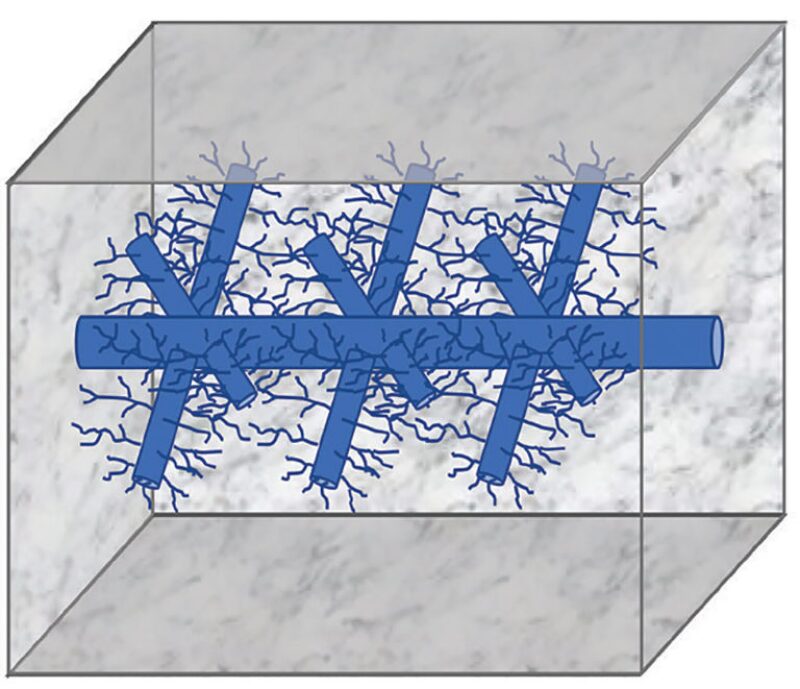Dendritic acidizing (DA) has a long history in the oil industry, going back at least to the 1980s. Significant technical advances include single-trip multitunnels using only acid-pumping equipment and a coiled-tubing (CT) unit, simultaneous tunnel creation, and improved parameter modeling and optimization. This paper provides an update on recent advances for DA methods, also known as acid tunneling, presenting a comprehensive review of published information for three different tunneling methods.
Introduction
A well with multibranching major tunnels and a superimposed structure of wormholes emanating from the main tunnels has been called a dendritic well. This paper refers to methods that include the use of acids to construct such a well as DA. DA methods can be thought of as a hybrid between multilateral wells with many short branches with low skin factors and matrix acid jobs with very long primary wormholes and many branching wormholes from the primary wormholes.


